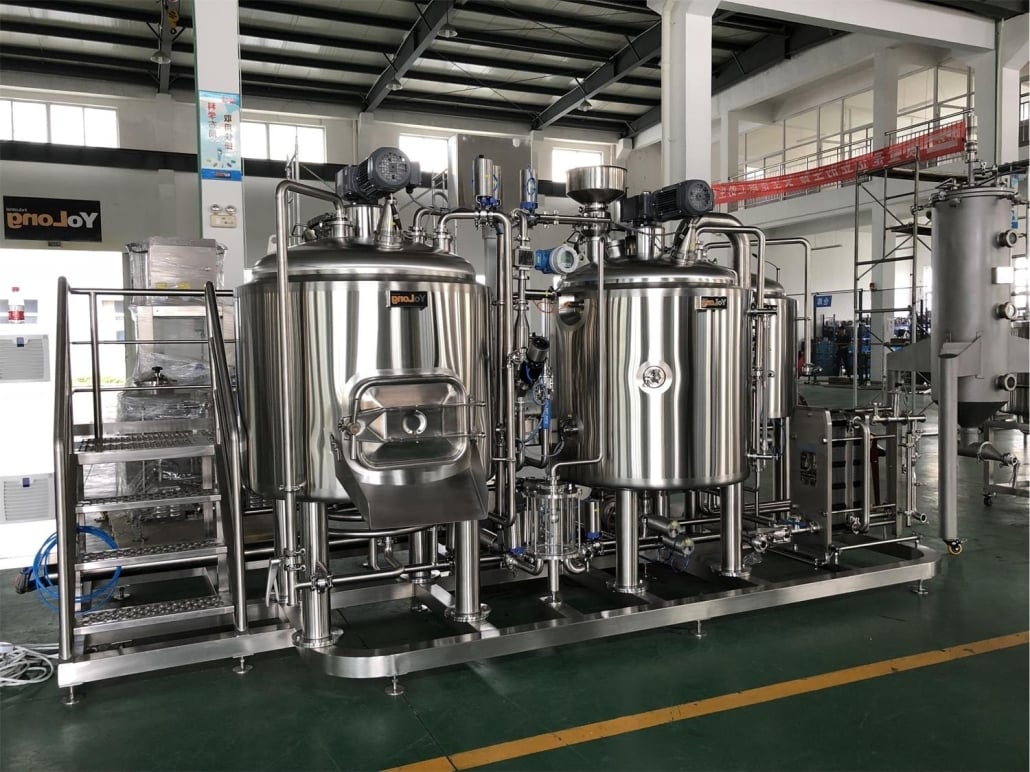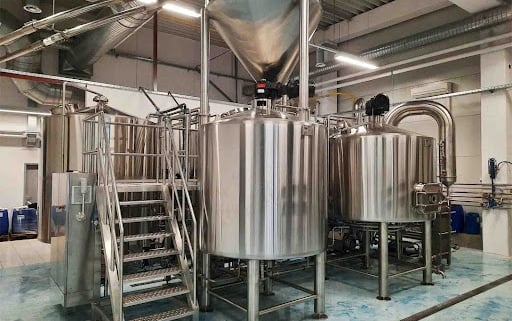beer brewing equipment kit
Have you ever dreamt of raising a glass of beer and saying, “I made this!”? Homebrewing allows you to craft your own unique beers, experiment with flavors, and impress your friends with your brewing prowess. But where do you begin? The answer lies in a well-chosen beer brewing equipment kit.
This guide will equip you with all the knowledge you need to navigate the exciting world of beer brewing equipment kits. We’ll delve into the essential equipment, explore the brewing process, and provide valuable tips on choosing the perfect kit for your needs.
Beer Brewing Equipment Kit Components
Before we dive deeper, let’s unpack the typical contents of a beer brewing equipment kit:
- Brew Kettle: This is the workhorse of your brewing setup. It’s a large pot where you’ll heat water, steep grains, and boil the wort (unfermented beer).
- Fermentation Bucket: This airtight container is where the magic happens – your wort transforms into beer through the power of yeast.
- Airlock: This ingenious device allows carbon dioxide to escape during fermentation while preventing unwanted contaminants from entering the brew.
- Siphon: This handy tool helps you transfer your beer between containers without disturbing the sediment.
- Bottles and Capper: Once your beer is fermented and conditioned, you’ll need bottles to store it in. A capper seals the bottles to keep your beer fresh and carbonated.
- Thermometer: Maintaining precise temperatures throughout the brewing process is crucial. A thermometer helps you monitor and adjust the temperature as needed.
- Sanitizer: Sanitation is paramount in brewing. A sanitizer ensures that your equipment is free of bacteria and wild yeast that can spoil your beer.
Additional Equipment (may or may not be included):
- Hydrometer: This instrument measures the sugar content of your wort, which helps determine the alcohol content of your finished beer.
- Auto-siphon: This upgraded siphon makes transferring beer even easier and less messy.
- Bottle Filler: This tool simplifies the bottling process, ensuring consistent fills and minimizing spillage.

Choosing Beer Brewing Equipment Kits
Now that you’re familiar with the essential tools, let’s explore different types of beer brewing equipment kits:
| Kit Type | Description | Pros | Cons |
|---|---|---|---|
| Beginner Kits | Designed for first-timers, these kits typically include all the basic equipment and a recipe for a simple beer style. | Easy to use, affordable, great for learning the ropes | Limited equipment, may not include all the bells and whistles |
| Intermediate Kits | Cater to brewers who have a few batches under their belt. These kits often include a wider variety of equipment and a recipe for a more complex beer style. | More equipment options, allows for experimentation | Higher price point compared to beginner kits |
| Advanced Kits | Geared towards experienced brewers, these kits may include specialized equipment for specific brewing techniques or larger batch sizes. | Highly customizable, facilitates advanced brewing methods | Most expensive option, requires brewing knowledge |
The Alchemy of Beer: A Look at the Brewing Process
Even the most sophisticated equipment is just a tool. Let’s unveil the fascinating journey your wort takes to become a delicious beer:
- Steeping: Crushed grains are steeped in hot water, releasing sugars and flavors.
- Lautering: The sweet liquid (wort) is separated from the spent grains.
- Boiling: The wort is boiled with hops, adding bitterness, aroma, and acting as a natural preservative.
- Cooling: The wort is rapidly cooled to prevent unwanted flavors and prepare it for yeast.
- Fermentation: Yeast is pitched into the cooled wort, consuming sugars and producing alcohol and carbon dioxide.
- Bottling/Kegging: The fermented beer is conditioned in bottles or kegs, allowing carbonation to develop.
Considering Space, Capacity, and Customization
Before you bring home your brewing kit, consider these crucial factors:
Space: Home brewing equipment takes up space. Measure your designated brewing area and choose a kit that fits comfortably.
Capacity: How much beer do you want to brew at once? Most beginner kits are for 1-gallon batches, while some advanced kits can handle 5 gallons or more.
Customization: Do you crave a bare-bones setup or one with bells and whistles? Consider your brewing aspirations and choose a kit that offers the level of customization you desire.
How Much Does a Beer Brewing Equipment Kit Cost?
Beer brewing equipment kits come in a variety of price ranges, depending on several factors:
- Kit Type: Beginner kits are naturally the most affordable, while advanced kits with specialized equipment can cost significantly more.
- Brand and Quality: Reputable brands with high-quality materials often command a premium price.
- Included Extras: Kits with extras like hydrometers, auto-siphons, or bottle fillers will be more expensive than basic kits.
Here’s a general breakdown of the price ranges you can expect:
| Price Range | Typical Kit Type | Example Features |
|---|---|---|
| Under $100 | Beginner Kit | Basic equipment for 1-gallon batches, often includes a recipe extract for a simple beer style. |
| $100 – $200 | Intermediate Kit | More comprehensive equipment for 1-gallon or 5-gallon batches, may include a wider recipe selection or specialty equipment. |
| $200 and Above | Advanced Kit | High-quality equipment for experienced brewers, may include features like digital thermometers, wort chillers, or equipment for larger batch sizes. |
Tips for Choosing a Beer Brewing Equipment Kit
With a plethora of options available, selecting the right beer brewing equipment kit can feel overwhelming. Here are some helpful tips to guide you:
- Know Your Skill Level: Are you a complete novice or a seasoned brewer? Choose a kit that aligns with your experience and brewing goals.
- Consider Your Budget: Determine how much you’re comfortable spending and choose a kit that fits your financial constraints.
- Think About Batch Size: How much beer do you want to brew per batch? Consider your consumption habits and choose a kit with the appropriate capacity.
- Read Reviews: Research different kits and read reviews from other homebrewers to get insights into quality, functionality, and ease of use.
- Don’t Be Afraid to Start Small: It’s perfectly fine to begin with a basic kit and upgrade your equipment as you gain experience and brewing confidence.
Suppliers and Brands to Explore
The world of homebrew equipment is teeming with fantastic suppliers and brands. Here are a few reputable names to get you started:
| Supplier | Website | Known For |
|---|---|---|
| Northern Brewer | https://www.northernbrewer.com/ | Wide variety of equipment kits and ingredients, excellent customer service. |
| Midwest Supplies | https://www.midwestsupplies.com/ | Extensive selection of equipment and homebrew supplies, educational resources. |
| Brewer’s Best | https://www.brewersbestkits.com/ | Affordable equipment kits and recipe kits, perfect for beginners. |
| Brooklyn Brew Shop | https://brooklynbrewshop.com/pages/instructions | High-quality equipment and ingredients, focus on small-batch brewing. |
| MoreBeer! | https://www.morebeer.com/ | Large selection of equipment kits and homebrew supplies, active online community. |
Remember: This is not an exhaustive list, and many other excellent suppliers and brands exist. Explore different options and find one that resonates with you.
Installation, Operation, and Maintenance
Your beer brewing equipment is an investment, so proper care is essential. Here’s a quick guide to installation, operation, and maintenance:
- Installation: Most brewing equipment kits come with easy-to-follow instructions for setup. If you encounter any difficulties, don’t hesitate to consult the manufacturer’s website or customer service.
- Operation: Before you embark on your first brew day, thoroughly read and understand the instructions for each piece of equipment. Pay close attention to temperature control, sanitation procedures, and proper use of each tool.
- Maintenance: Cleaning and sanitizing your equipment after each brew is crucial to prevent contamination and ensure the longevity of your equipment. Invest in quality cleaning brushes and sanitizing solutions specifically designed for homebrewing.

FAQs
Here are some frequently asked questions (FAQs) to shed light on common concerns regarding beer brewing equipment kits:
Q: What if I don’t have all the equipment in the kit? Can I substitute items?
A: It’s generally not recommended to substitute essential equipment in a kit. The components are designed to work together, and substitutions could negatively impact your brew.
Q: I’m worried about making mistakes. What if I mess up my first batch?
A: Mistakes are a natural part of the learning process in any new endeavor, and homebrewing is no exception. The good news is that most brewing mishaps can be salvaged, and even if your first batch isn’t award-winning, it will be a valuable learning experience. There are also many online resources and forums where you can connect with other homebrewers who are happy to share their knowledge and offer troubleshooting tips.
Q: Can I expand on my kit later on? Are there upgrade options available?
A: Absolutely! The beauty of homebrewing is that you can customize your setup as you progress. Many suppliers offer individual pieces of equipment, so you can gradually add on tools and components as your skills and brewing ambitions grow. Upgrading your equipment can open doors to new brewing techniques and allow you to experiment with a wider variety of beer styles.
Additional Considerations for Beginner Brewers
While a well-chosen equipment kit provides a solid foundation, there are a few other things to consider as you embark on your homebrewing journey:
- Ingredients:* You’ll need high-quality malt extract, hops, and yeast to create your beer. Many suppliers offer recipe kits that include all the necessary ingredients for a specific beer style.
- Bottles or Kegs:* Once your beer is fermented, you’ll need a way to package it. Glass bottles are the traditional choice, but kegs offer several advantages, such as easier bottling, less waste, and consistent carbonation.
- Sanitation:* Sanitation is paramount in brewing. Invest in a no-rinse sanitizer and dedicate time to thoroughly cleaning and sanitizing all your equipment before, during, and after each brewing session.
- Bottling/Kegging Supplies:* Depending on your chosen packaging method, you’ll need additional supplies like bottle caps, a capper, or a bottling bucket and filler for bottles, or a keg coupler and CO2 tank for kegs.













